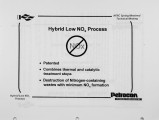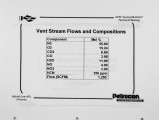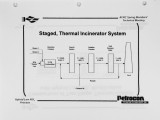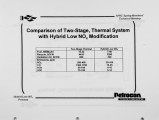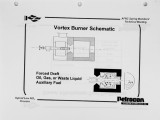| OCR Text |
Show The introduction of oxidation air into the quench section and the need for less quench recycle and oxidation air resulted in a 100% increase in residence time. Additionally, the average temperature in the oxidation zone increased from 1700°F to 2400°F The combination of higher temperature and residence time resulted in a significant increase in the destruction of H C N and C O with an insignificant increase in NOx- The catalytic reduction step was recommended to provide maximum NOx reduction with minimum excess fuel. A commercial demonstration test on IC engines at the University of San Diego cogeneration facility demonstrated N O x reductions in excess of 99.9% using this approach (7). The catalytic oxidation step was added because of the fixed residence time available in the oxidation zone of the existing equipment and for improved performance during non-steady-state operations. Allied-Signal, the catalyst supplier, estimated that the addition of the catalysts would provide an additional 8 0 % reduction in HCN, a 9 9% reduction in CO, and a minimum overall destruction efficiency of 9 8 % for VOCs. A comparison of the original two-stage thermal system and the Hybrid Low NOx modification is presented in Table II. Table U Comparison of Two-Stage, Thermal System with Hybrid Low N O x Modification Fuel, MMBtu/hr Recycle, SCFM Oxidation Air. SCFM Emissions, ppm NOx CO HCN VOC Two-Stage Thermal 10.22 4410 800 250-450 1300-1700 50-100 75-150 Hybnd Low N O x 7.49 3290 320 25-100 15-25 5-10 5-10 C O N C L U S I ON The Clean Air Act Amendments of 1990 made several significant changes in the Clean Air program which will impact operation of chemical and petrochemical facilities. In general, those sources which emit 100 tons per year of nay air pollutant, 10 tons per year of any individual hazardous air pollutant, or 25 tons per year of any combination of hazardous air pollutants, or any source subject to the non-attainment provisions will be affected by the new law. Those sources which fall into this category will be required to demonstrate at least 9 0 % control for hazardous air pollutants or demonstrate that 7 |










